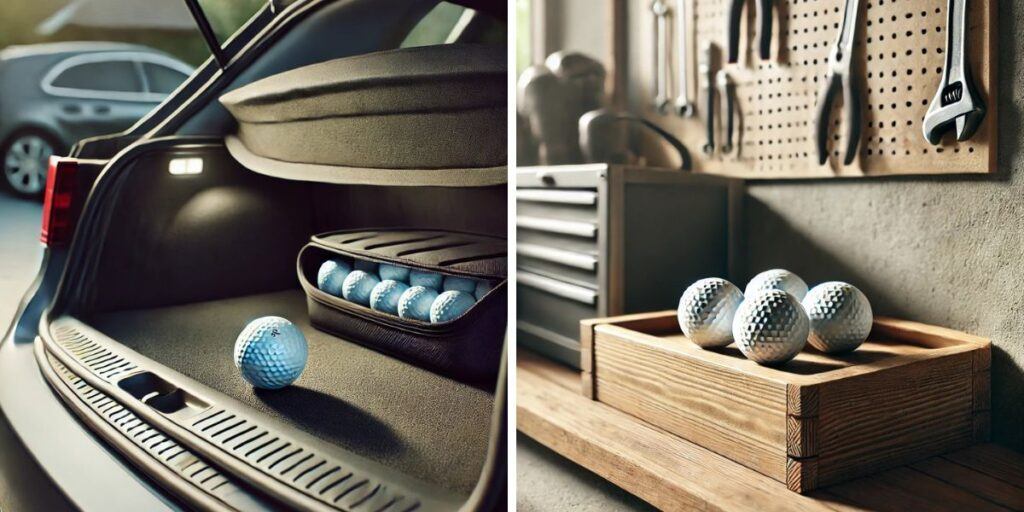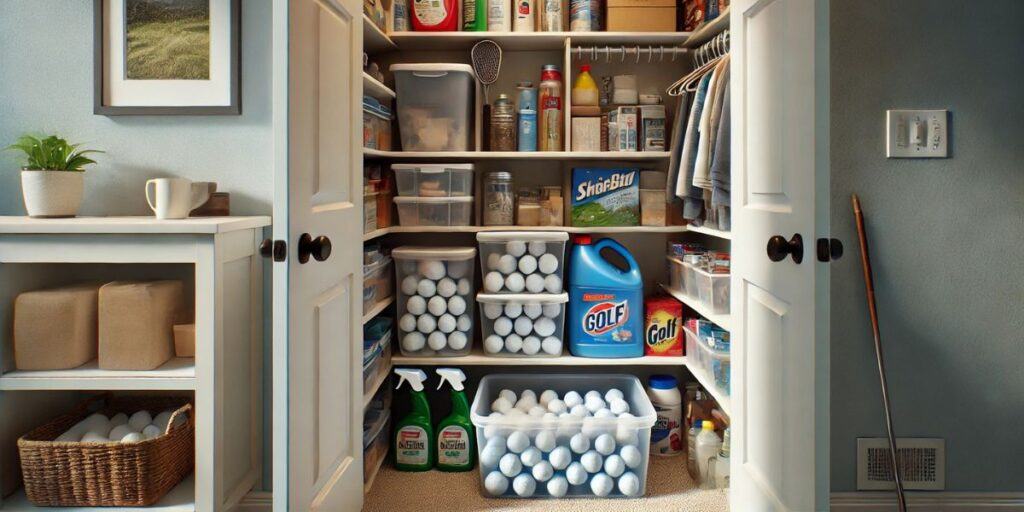Answer this question and be honest. Have you ever considered how much storage conditions can impact your golf ball’s performance? If your answer is never, you are among the majority of golfers. Believe it or not, a poorly stored ball can influence your game. The materials inside a golf ball don’t love extreme heat, cold, or damp places. Therefore, find out the best practices for storing golf balls for more consistent golfing.
Places like the trunk of a car or a garage are not ideal locations to leave golf balls in. These locations are subject to fluctuating temperatures and environmental conditions that aren’t friendly to balls. Synthetic cores and ionomer or urethane covers can degrade or change properties if subjected to the wrong conditions for too long. This can affect anything from how far your ball travels to how it spins.
Ideal Environment Conditions for Storing Golf Balls
Regarding the environment where you stash your golf balls, a nice stable temperature is key. It might seem convenient to just toss them wherever there is a spot. However, the inconsistency in temperature can mess with the ball’s performance.
Golf balls hate moisture. They need to stay dry because moisture can warp their shape and mess up their core. That isn’t something you want when looking for consistency on the course.
Professional golfers and their teams know this well. Many pros have climate-controlled storage solutions for their gear. It helps keep everything, including golf balls in pristine condition. Granted, not everyone can manage a high-tech setup, but something with a more stable temperature will do.
Setting up a golf ball storage spot somewhere nice and dry in your home can be simple. A closet inside the house or apartment could be the solution. Ensuring that balls stay out of basements, garages, and exposed areas can help a lot to keep their quality.

Choosing the Right Storage Containers and Locations
Picking the perfect spot to store your golf balls might seem tricky. Nonetheless, it is pretty easy once you know what to look for. You want containers that are stackable and easy to access. Ideally, the ones that seal tight to keep out unwanted dampness. Plastic bins with lids work great, and they’re super affordable.
Finding space inside your house could take a little creativity. Get crafty using closet shelves or even space under your bed. As long as the spot is tucked away from extreme temperatures and humidity, you’re good to go.
Some folks use shoe organizers with separate compartments for each ball. That’s a neat trick when you’re tight on space. Imagine opening a cabinet and picking out a perfectly stored golf ball, ready for action.
Find a storage option and location that works for your space and gives them the protection they need.
Seasonal and Long-Term Golf Ball Storage Solutions
In areas where you can’t golf year-round, you face off-seasons. Then many golfers switch gears and put their equipment into a kind of hibernation mode. Keeping golf balls cushioned in a protective case or storage box helps them stay in prime condition.
A climate-controlled spot works wonders, especially if you’re thinking about long-term storage. Anywhere in your home that’s consistently around room temperature works pretty well. Avoid spots that are either hot and stuffy or too chilly.
Even with that perfect storage spot, don’t just forget about your golf balls. It’s worth it to occasionally check on them, ensuring they’re still in great condition and not damaged or compromised. Doing a quick examination can prevent any surprises when it’s time to tee off again.
Signs You Need to Replace Your Stored Golf Balls
Not all golf balls are destined to last forever. Thus, knowing when to swap them out can spare you some frustration on the course. A clear sign that it’s time to replace your golf balls is a noticeable drop in performance. Maybe they’re just not flying as far as they used to, or the spin feels off. When you start noticing these changes, it might be time for a fresh batch.
Visual inspection can also give you solid clues. Keep an eye out for cuts, cracks, or even just a weird yellow tint. These are telltale signs that your stored golf balls might not be in playing condition anymore. Even slight wear on the surface can alter how the ball moves through the air.
Don’t forget to give them a squeeze. Sometimes, a golf ball’s firmness can subtly change over time. If they feel softer or different, it could be a hint that they’ve lost their prime.
Regularly checking your stash, especially before the playing season kicks in, sets you up for a successful game. Replacing worn-out balls helps your game and ensures you’re aware of what’s in your bag at all times. Plus, you can experience the excitement of unboxing a new set of golf balls.

Tips for Maintaining Golf Ball Quality Over Time
Start with regular check-ups. Set up a routine to inspect your golf ball stash. This way you make sure they are ready for action. Routine inspections catch issues early, so you eliminate possible surprises.
Environmental consciousness can also extend to how you store your golf balls. For example, avoid places that experience big temperature swings or high humidity. Consistency is your friend here, so stick to spaces that can offer it.
Spread the word among your golfing pals. Sharing knowledge about proper golf ball storage can help your friends as it will help you. You’d be surprised how many don’t realize the impact that simple storage solutions can have.
Store Right
As I mentioned above, there are numerous benefits to properly storing your golf balls. Hence, make the needed adjustments to extend their shelf life and help your game. You most likely have all the requirements to do it, so go ahead. You will feel better knowing you can rely on your golf balls and your wallet will be thankful as well.

